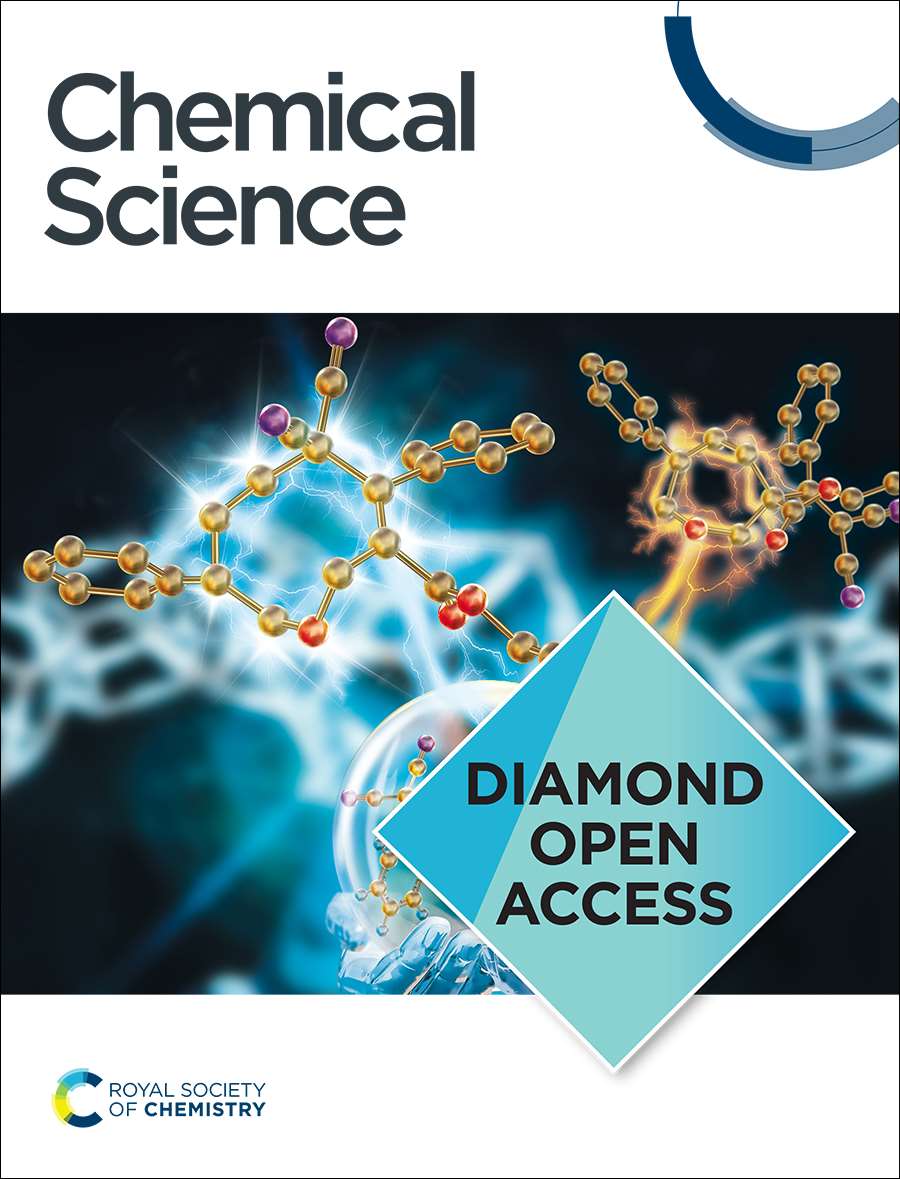Abiotic Formation of Hexoses and Disaccharides in Aqueous Microdroplets
IF 7.6
1区 化学
Q1 CHEMISTRY, MULTIDISCIPLINARY
引用次数: 0
Abstract
Understanding the chemical reactions that led to the origin of life is a fundamental challenge. The formose reaction, an abiotic pathway to monosaccharides, provides a mechanism of sugar formation from simple aldehydes and ketones. However, the reaction requires extreme pH, metal catalysts, and is prone to side reactions, leaving questions about how such processes could have occurred on a primitive Earth. The abiotic formation of more complex sugars, such as disaccharides also require catalysts, and remains underexplored compared to other classes of biomolecules. This study investigates the role of microdroplets in the formation of hexoses and their subsequent condensation reactions to produce disaccharides, without the need for catalysts. The microdroplet-mediated synthesis of fructose and sorbose from glyceraldehyde or dihydroxyacetone, as well as that of disaccharides from various pentoses or hexoses, was monitered via mass spectrometery. Products were confirmed by high resolution mass spectrometry and tandem mass spectrometry. The product distribution of glucose disaccharides was determined by matching the relative intensities of product ions to a mixture of six disaccharide and it showed a yield of 9.4% or 1.7μg/min/emitter . This study demonstrates the abiotic formation of disaccharides, such as xylobiose and maltose, provides a possible link between prebiotic sugar synthesis and extant carbohydrate biochemistry. Hexose formation and disaccharide synthesis are driven by the unique air water interface of microdroplets, where partial solvation, pH extremes, and fast mass transfer kinetics enable abiotic condensation.求助全文
约1分钟内获得全文
求助全文
来源期刊

Chemical Science
CHEMISTRY, MULTIDISCIPLINARY-
CiteScore
14.40
自引率
4.80%
发文量
1352
审稿时长
2.1 months
期刊介绍:
Chemical Science is a journal that encompasses various disciplines within the chemical sciences. Its scope includes publishing ground-breaking research with significant implications for its respective field, as well as appealing to a wider audience in related areas. To be considered for publication, articles must showcase innovative and original advances in their field of study and be presented in a manner that is understandable to scientists from diverse backgrounds. However, the journal generally does not publish highly specialized research.
 求助内容:
求助内容: 应助结果提醒方式:
应助结果提醒方式:


